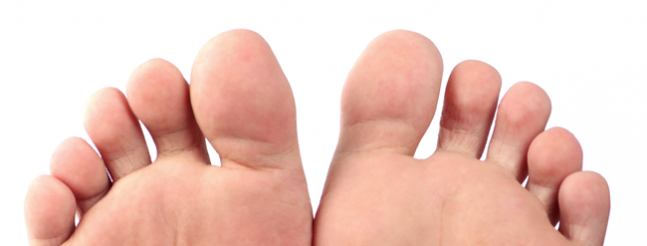Diabetes and foot care
DEFINITION
Diabetes or diabetes mellitus is a metabolic disorder
characterised by hyperglycaemia (high blood glucose levels) caused
by impairment in insulin secretion and/or action. Diabetes causes
changes to the physiology of the foot that need to be monitored by
people with Diabetes and their health care team.
characterised by hyperglycaemia (high blood glucose levels) caused
by impairment in insulin secretion and/or action. Diabetes causes
changes to the physiology of the foot that need to be monitored by
people with Diabetes and their health care team.
DESCRIPTION
Polyneuropathy is a complication of diabetes that results in
nerve fibre damage, leading to diminished sensation in various
parts of the body, including the feet. This means that a person
with diabetes may not feel the pain associated with a foot injury,
and may develop foot ulcerations and infections as a result of
repeated injury. See the Diabetic Neuropathy topic for further
information.
nerve fibre damage, leading to diminished sensation in various
parts of the body, including the feet. This means that a person
with diabetes may not feel the pain associated with a foot injury,
and may develop foot ulcerations and infections as a result of
repeated injury. See the Diabetic Neuropathy topic for further
information.
Peripheral vascular disease and the associated atherosclerotic
plaque formation in the arterial vessels of the leg can impair
wound healing in the foot area. Diabetes can also lead to altered
foot biomechanics and foot deformities that need to be carefully
monitored.
plaque formation in the arterial vessels of the leg can impair
wound healing in the foot area. Diabetes can also lead to altered
foot biomechanics and foot deformities that need to be carefully
monitored.
TREATMENT OPTIONS
Diabetics should be educated about foot care by their diabetes
management team (Doctor, Educator or Nurse, Podiatrist etc). This
information should focus on:
management team (Doctor, Educator or Nurse, Podiatrist etc). This
information should focus on:
- The importance of practising good foot hygiene habits.
- Checking the feet regularly (daily) for signs of foot injury
(open lesions and cuts) and/or infection. - Correct footwear selection, first aid for acute injuries and
cutting toenails correctly. Always wear shoes, as this can minimise
the risk of foot injury.
Diabetics should consult a Podiatrist for the treatment of
corns, callouses, wounds etc and for a regular review of their feet
and foot care management plan.
corns, callouses, wounds etc and for a regular review of their feet
and foot care management plan.
ORGANISATIONS & SUPPORT GROUPS
See the Diabetes Australia topic on the Healthpoint.

PHARMACIST’S ADVICE
Ask your Pharmacist for advice.
- Make sure that you keep check your feet daily.
- Your Pharmacy stocks a full range of nail scissors. Ask for the
best brand available. - Emery boards are available from your Pharmacy to file away any
jagged or rough edges on the toenails. - If you need a small cosmetic mirror to check the feet, ask your
Pharmacist to recommend one. - A good nourishing lotion is glycerine and sorbolene. It is
suggested that a moisturiser containing 10% urea is preferred.
Apply to the feet after bathing. - It is important to always have sterile dressings on hand in
case of an injury to the feet. Ask your Pharmacist to recommend the
most suitable types. There is a foot aid kit compiled by Diabetes
Australia available containing moist wound dressings. When treating
a minor injury wash and gently dry the injured foot and apply a
non-stick dressing using tape. The dressing should be inspected and
changed every day.

